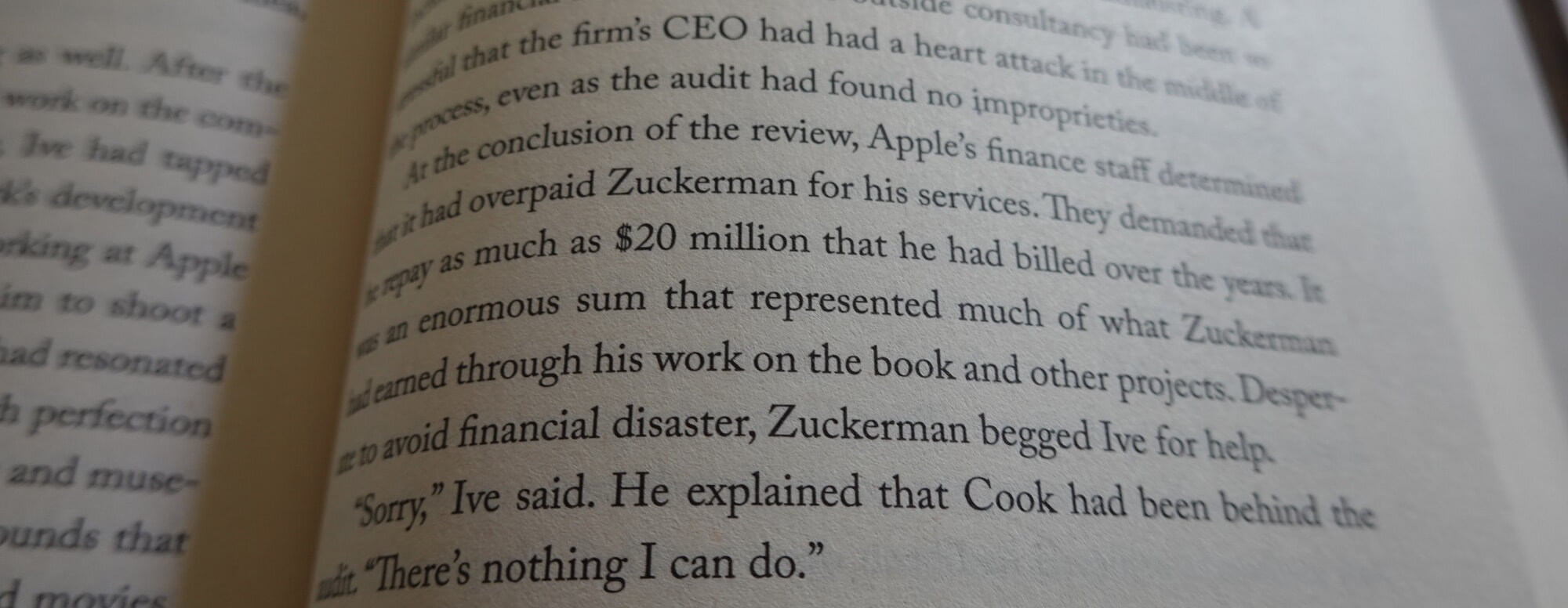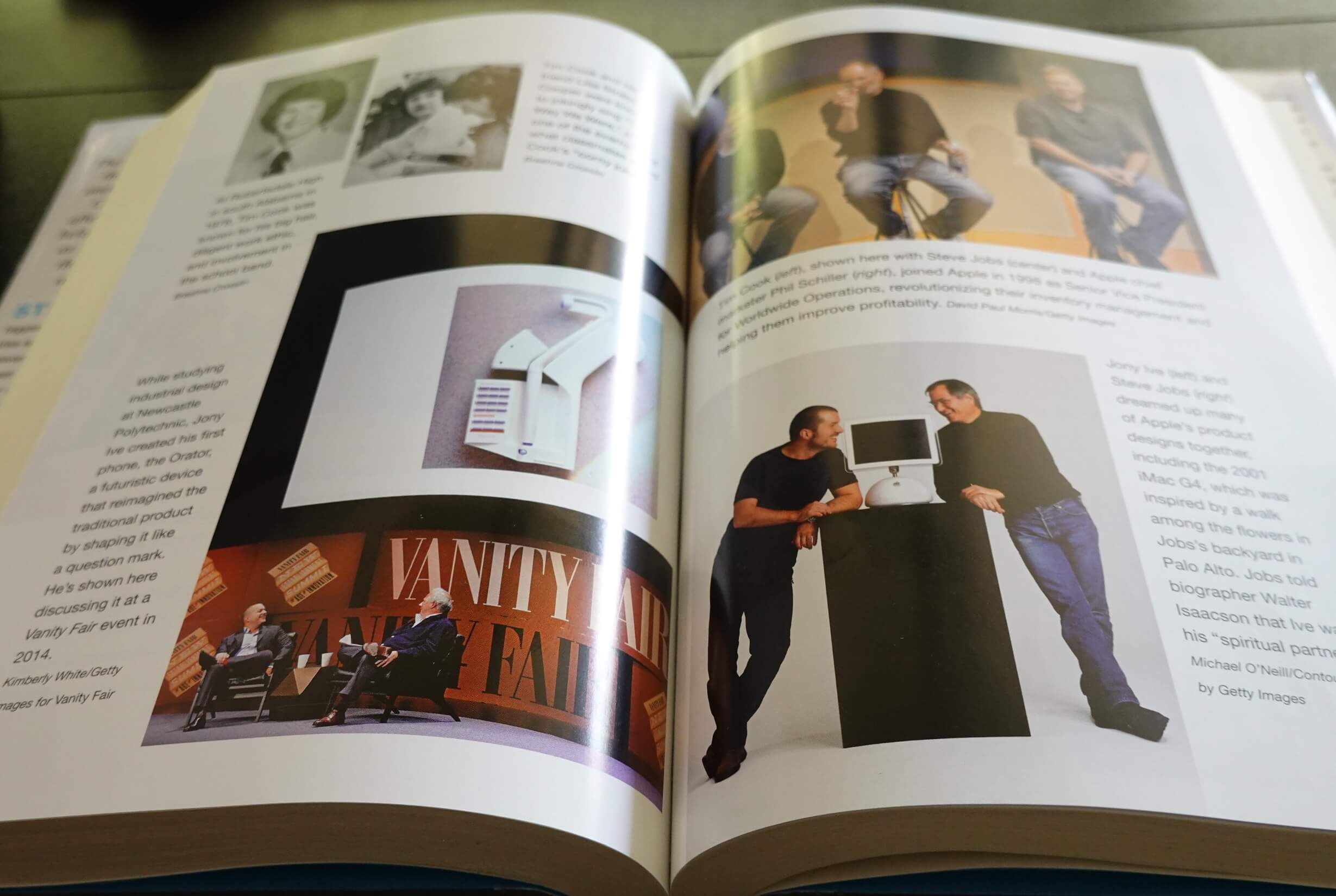After Steve: How Apple Became a Trillion Dollar Company and Lost Its Soul, the new WSJ book turned NYT tech reporter Tripp Mickle out today. received an extended copy for review. Within its pages, the reader’s time is divided between tracking the origins and careers of Apple’s two top decision makers over the past few years, Tim Cook and Jony Ive, including much that has already been publicly documented. New details about Scott Forstall’s last year at Apple, the origins of the Apple Watch, and revealing moments in the early development of the legendary Apple Car project complete the narrative enough to capture the attention of Apple’s most careful observers.
After Steve revisits most of the last decade at Apple, mostly from 2011 to 2019, from the period when co-founder Steve Jobs stepped down as CEO to when chief designer Jony Ive officially left the company. The narrative also tracks Tim Cook’s tenure as CEO, during which the company skyrocketed in value despite stubborn early worries that Apple might be doomed without Steve Jobs’ leadership.
The goal of After Steve is to make the topic interesting enough to revisit so soon (although time will ease that burden). The question of what will happen to Apple after the death of Steve Jobs is much less of a concern now than in 2011.
It’s also hard today to write a book about Apple without necessarily including some already well-covered topics for context. Reading about Jony Quince’s early days at Apple, or some of the details we know about Tim Cook’s early life, may seem boring to those who already understand these characters. However, newcomers will appreciate the ending, presented with details about Ive’s early interactions with Steve Jobs and Tim Cook’s obsession with Auburn college football.
Mickle also sprinkles new reporting on both key moments in the timeline and trivial moments where the narrative grabs your attention without feeling completely retold.
For example, Mickle writes that iPhone software head Scott Forstall was “apoplectic” when he determined that it was hardware, not software, that caused the iPhone 4 prototype to drop calls before “Antennagate” became a public debacle:
The most unpleasant encounter happened with Ive. In 2010, Apple was in the final stages of production of the iPhone 4. A prototype given to Forstall dropped calls repeatedly while he was on the phone. He feared that the problem was related to the software and called the staff to find out what was wrong. After his team found no coding issues, Forstall found that the issue was due to the design of the phone. Ive wanted a thinner, lighter iPhone, which he achieved by wrapping a metal antenna around the edges of the device. Forstall had a stroke. In conversations with Jobs, he criticized the flawed design and complained that it had been hidden from his development team. I bristled at the criticism.
Forstall was also not a fan of the original idea for the Apple Watch, Joni’s first product idea after the death of Steve Jobs, according to Mickle:
The engineer who developed the iPhone operating system feared that a miniature computer attached to people’s wrists would distract them from their daily lives. He feared it would exacerbate the unintended consequences of the iPhone, a device so immersive that it consumed attention, interrupted conversations and endangered drivers. He worried that the watch would exacerbate interruptions in daily life by bringing notifications from people’s pockets and purses to their wrists. While he didn’t rule out the watch, he said it should have capabilities beyond those already available on the iPhone. He preached caution.
Forstall’s doubt irritated Quince.
According to the book, Forstall preferred to develop a product based on television instead.
Forstall, whose employees participated in the presentation, advocated the idea of creating a system that would bring together TV channels in one place so that people could search for broadcasts with their voice. The system will also show programs that people regularly watch and suggest programs related to them that they might like. But for it to work, Apple needed the TV networks to buy it, a lengthy process that would be out of its control. With mounting external pressure, it fell to Tim Cook to decide on Apple’s next move: the Quince watch project or Forstall’s TV efforts.
Forstall, of course, was eventually fired by Tim Cook early on in his tenure as Apple CEO, and as a result, Jony became involved in software engineering. Oh, what a meme “friction with Forstall” would be if “rubbing with Jony Ive” wasn’t given so much room to breathe.
With Forstall gone and Jony reappearing, reality gives way to other interesting stories about Jony Quince, the Apple Watch, and the Apple Car project.

The book includes stories of how Ive adapted an iPod nano using an ECG to showcase what a potential Apple Watch product is capable of, a bizarre Apple Car demo in 2015, and even an embarrassing detail when the photographer behind Jony Ive’s product design book Apple was asked: Apple will pay out up to $20 million after an audit pointed to overbilling for its services.
The development of the Apple Car is reportedly ongoing to this day, but according to After Steve, this was exactly the case seven years ago:
see also

One day in the fall of 2015, Ive met Tim Cook in Sunnyvale to show him how he imagines a car to work. He imagined that the vehicle would be voice-controlled, and passengers would get into it and tell Siri where they wanted to go. The two executives entered the prototype lounge-like cabin and sank into their seats. Outside, the actor acted as Siri and read from a script written for a quirky demo. As the imaginary car raced forward, Ive pretended to look out the window. “Hey Siri, what’s that restaurant we just passed?” he asked. The actor outside answered. This was followed by several more exchanges of views with leaders. After that, Ive got out of the car with an expression of satisfaction on his face, as if the future was even grander than he imagined. He seemed oblivious to the engineers watching, some of whom were gripped by the unsettling feeling that the project was as fictional as the demonstration and was progressing quickly but far from its final destination.
The format of the book changes between chapters, detailing Jony Quince’s experience and the actions taken by Tim Cook. The two paths sometimes cross, but the lack of crossover is also used to describe the reality that Tim Cook allowed Jony Quince to leave Apple with little fanfare.
It also highlights the period when Jony tried to leave the company much earlier, and the famous story of his transfer to part-time, awkward return and inevitable departure. Cook’s storyline is much more stable and less interesting. This is partly due to the nature of the Apple executive (private and public figure), although the great book about Tim Cook has not yet been written.
What is missing, however, is any mention of a actually very interesting story that happened behind the scenes at Apple during the MacBook era with the butterfly keyboard. Despite the designer’s insistence on perfection, in his last years at the company, certain Apple hardware did follow design directions that favored form over function.
The book contains criticism that Ive was being paid perhaps too much, especially when he may have been distracted by a desire to leave the company, but someone could write a whole book about the state of Mac in the last few years of Jony and about his recovery after his care. .

As for the subtitle “How Apple Became a Trillion Dollar Company and Lost Its Soul”, the first one is actually fixed, while the second one is possibly editorial and remains open for discussion. This notion that Cook took the company away from a place that had the spirit in favor of financial success is permeated throughout the book.
Thankfully, the editing is light enough that After Steve should appeal to even those who are confused by the subtitle. Tripp Meekle’s book After Steve: How Apple Became a Trillion Dollar Company and Lost its Soul came out today.
Reading now
The post Forstall’s friction, the origin of the Apple Car, Joni’s departure appeared first on Gamingsym.
